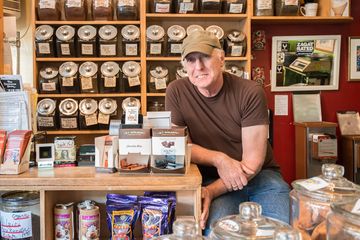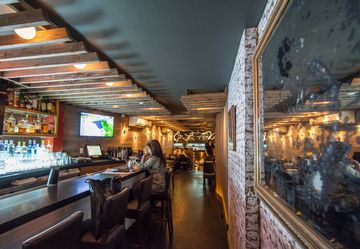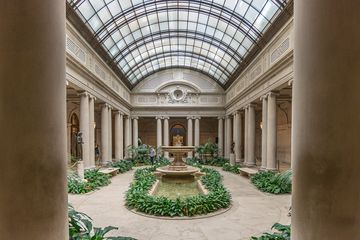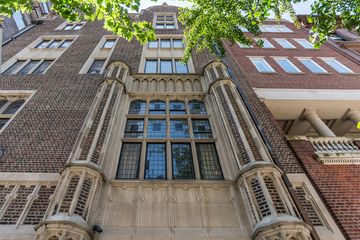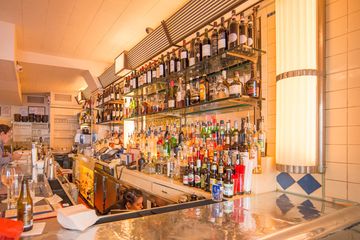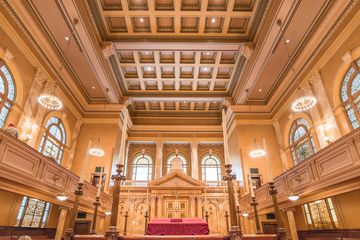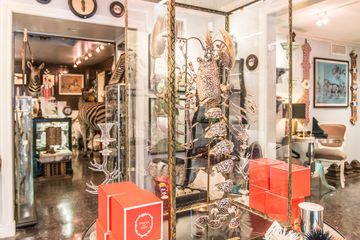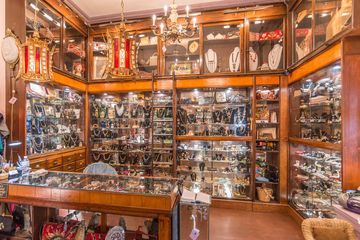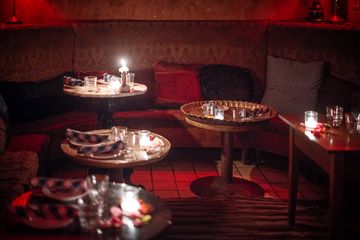I have lived on the Upper West Side for several years, but it was not until I walked on 70th Street one evening that I discovered Shalel. It is tucked away down a set of stairs with no signage during the daytime. Curious what this was, I descended the steps lined with rose petals and herbs, and entered what seemed like a magical cave, decked out in Moroccan décor and candles. There were secret nooks behind curtains and around corners filled with pillows, couches and tapestries. In the back, erupting from a mysterious darkness, was the fountain for which the restaurant is named - Shalel means “fountain” in Arabic. When I visited with the Manhattan Sideways team, I was able to learn the history of the restaurant from the owner. Vasilis Katehis, who hails from Greece, bought the basement space in 2000. “It was terrible, ” he said, describing an uninhabitable, dark piece of real estate that apparently had never been used for anything except storage. He began by lowering the floors by a foot and exposing the sheet rock, which he cleaned. The waterfall, he explained, used to be a pile of dirt. Despite the difficulty of the project, Vasilis greatly enjoyed the endeavor, since he considered it a labor of art. “I like anything having to do with design, décor, and poetry, ” he lyrically stated. “I had a vision. ” By the time Vasilis was done with the renovation, the difference between the beginning and end product was “like night and day. ” Even though the nooks and crannies had all existed before - and Vasilis's vision was to do “the unfinished thing, ” - he succeeded in completely transforming a basement into a romantic restaurant. Shalel immediately attracted customers, drawn to the idea of an underground eatery. Initially, it used to be more of “a date place, ” but in 2015, Vasilis told me that he tends to attract an older clientele. He also shared with me that he is the mastermind behind the entire menu, which is Mediterranean with an emphasis on Moroccan cuisine. As for Vasilis’s own background, he recounted, “I grew up as a farmer and a fisherman, ” and then added that he knows how to make both olive oil and wine, thanks to his upbringing on a tiny Greek island without a name. “For us, it was natural. ” Though he had other restaurants scattered around New York, Vasilis has sold them, with the exception of Shalel. He casually mentioned that he hopes to drift into semi-retirement and spend more time in Greece restoring his olive groves. It is unclear what the neighborhood would do without him, though. As he declared, “They know me on the Upper West Side. ” We had a long chat about the local businesses in the area, including those that have had to shutter over the years. After discussing raising rents, fallen culinary comrades, and the future of New York, Vasilis turned to me and added something rather poetic - If worse comes to worst, “We can all just go back to making olive oil. ”
